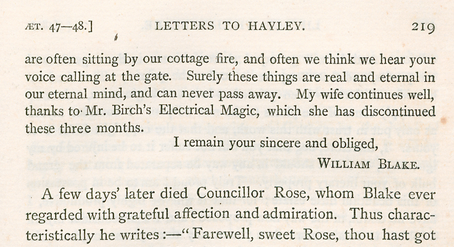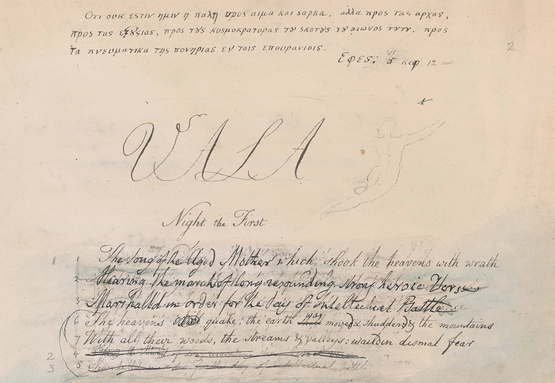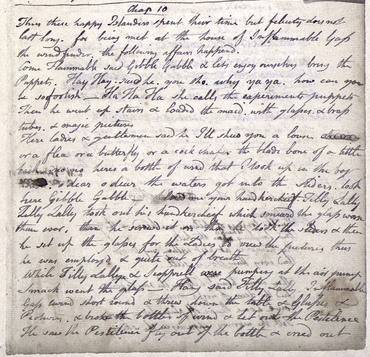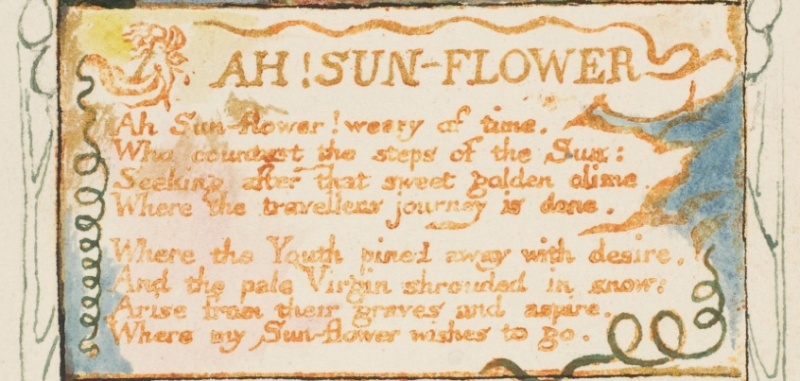One of the main ways that we organize Blake Archive works while encoding is through “line groups”, an element represented by <lg> in our BADs (Blake Archive Description). Here’s the formal definition from our documentation:
<lg>. This element identifies line groups–i.e., blocks of text on the object, such as stanzas or paragraphs. For verse, simply use <lg>, but for prose text (i.e., not poetry), use the type with value “prose”: e.g., <lg type=”prose”>.
As BAND has been preparing typographic works for publication, we have encountered a number of new transcription, display and encoding problems related to “secondary text” (discussed most recently by Eric here and Megan here) including one that questions the status of our beloved <lg>. So, riddle me this Ye Transcription Gods, if poetry is <lg> and prose is <lg type=”prose”>, then what is text that is neither poetry nor prose? For example, most of our typographic works include a running header across the top of the page, how should we categorize that?
This is object 2 of a letter that Blake wrote to Hayley on 18 December 1804. The original is no longer in existence, so we have used photography from Alexander Gilchrist’s Life of William Blake (1880) in order to prepare our edition.
One solution is to create a new value, such as “header” so that we can describe the text at the top of the page as fully as possible: after all one of the great advantages of using xml is being able to include detailed metadata in the BAD. Another option is another element described in our documentation as follows:
<texthead>. This element is used for plate numbers and other similar portions of text that are not part of the main transcription proper.
This could be a great choice for situations described in the example above, but how about more complicated works, like Blake’s heavily-revised, unfinished manuscript Vala or The Four Zoas? Here’s the top of Object 3, which includes three lines written in Greek above the title, “VALA“. These lines are certainly “not part of the main transcription proper” but I would argue have a different status from something like a plate number. And then what about “VALA” and “Night the First”? Do we describe them as some kind of line group? And wait, can a line group only have one line????
This is the kind of thing we discuss ad infinitum. The next step is to post our question on blake-proj to see what the Blake Archive Editors and other team members think… We’ll let you know the outcome of that conversation in another post.





